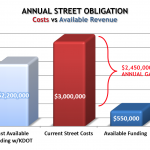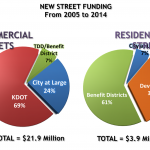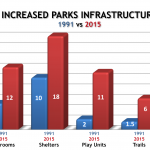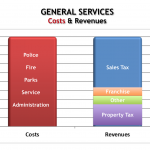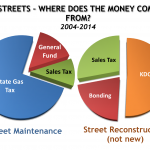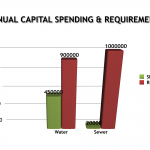By JONATHAN ZWEYGARDT
Hays Post
The city’s infrastructure, in its current form, is not sustainable. That is the message City Manager Toby Dougherty presented to a joint meeting of the Hays City Commission and the Hays Area Planning Commission on Tuesday night.

For the past five months, city staff has been conducting a fiscal analysis as a group project for the city of Hays.
The city wanted to expand on the Strong Towns model, which says community development is focused too much on the automobile and the current path is unsustainable. According to Dougherty, cities have lost track of “what creates wealth and what creates a liability.”
“New infrastructure is being built without revenues to maintain it,” Dougherty said. “Parks, police, fire (and) public resources staff is all growing at an unsustainable level.”
Since 1950, the city has built 84 percent of its infrastructure, he said. Now those streets are beginning to age and will need to be replaced — and the funding sources to pay for the reconstruction are disappearing. Dougherty said the fuel tax is the only steady source of funding the city has left to count on.
In the past, the city has used money from the Kansas Department of Transportation, sales tax and bonds to pay for infrastructure projects.
“We aren’t paying much for these streets. We’re getting these streets given to us,” Dougherty said, “and yet we have to accept the liability.”
According to the data collected, the annual costs of city streets is $3 million, compared to the $550,000 it receives in funding — leaving an yearly gap of $2,450,000. Click here for the entire presentation.
The water and sewer infrastructure is in the same dire situation as city roads.
Dougherty said the city should be spending $900,000 a year on water line maintenance — currently the city spends $450,000. The city should be spending $1 million on sewer per year — but now the city spends almost nothing.
As a result, Dougherty said rates will have to increase.
“We are way too far behind the curve to try to play catchup with water and sewer construction,” he said, adding a rate increase is unavoidable.
Part of the issue, he said, is that the sale tax funds the general fund, but while the sales tax brings in outside money, “there is very little connection between the drivers of growth and the revenues to pay for it.”
Much of the growth has been residential and because houses do not raise sales tax revenue, there is now a gap.
“What a lot of people in the community see as progress,” Dougherty said, “we could see as a liability if we’re not directly generating revenues from that.”
Adding to the problem, he said, is the level of service being provided to the community.
In 1994, the city created a comprehensive plan, based on what residents wanted. It called for the creation of a sports complex, water park and bike lanes, among others — amenities the city now must maintain.
One of the examples Dougherty gave was the recently completed West 41st reconstruction project, comparing it to upgrading East Eighth.
The 41st Street reconstruction cost $3.8 million to accommodate 2,600 vehicles per day. East Eighth street would cost $2.5 million for 7,280 vehicles per day. In addition, the residential nature of 41st offers no additional sales tax to the city, while East Eighth’s commercial status is revenue-producing.
Dougherty said city staff is calling for a course direction, and they will begin to evaluate costs and needs of projects.
Dougherty called Tuesday night’s presentation the first step in that course change and said it is now up to the Hays City Commission and the planning commission to evaluate the situation and devise solutions.

